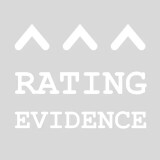Why can ESG scores lead to unsustainable portfolios and “green” bubbles?
Louis Larere, Portfolio Manager SRI, Zadig Asset Management, investigates this question.
Sustainability is currently the most important trend in asset management and the integration of sustainability criteria in investment processes is already considered an “operating license” for many. Asset managers primarily use what are known as ESG scores, i.e. scores that are created according to ecological and social criteria as well as those for the appropriateness and correctness of corporate governance. A handful of rating agencies are in this business.

“But such an ESG integration should not be equated with sustainable investing,” warns Louis Larere, pointing out the following weaknesses in ESG ratings:
ESG rating providers differ greatly in their assessments of the same company. The ratings are only correlated to an average of 61 percent. In the banking sector, on the other hand, the assessments of the creditworthiness of different providers for a company are 99 percent correlated.
The peer group approach of rating agencies leads to biased results. If companies are only compared with their industry or their sector, this leads, for example, to the Portuguese oil company Galp Energia receiving an MSCI ESG rating of “AAA”, while Fresenius is only awarded “BBB” and thus in the health sector belongs to the bottom 50 percent.
These flaws in the system make it theoretically possible to put together a portfolio that consists exclusively of oil, gas and tobacco companies and that would also receive an MSCI ESG rating of “AA”. Good ESG ratings do not mean that a company is also a sustainable investment. There is also the risk that the focus on ESG ratings will create a “green bubble” and that the same companies will always be added to the portfolios by investors. The resulting overvaluation reduces the potential returns on such “sustainable” portfolios.
Louis Larere’s criticism is remarkable, as it shows the fine balancing act that rating agencies have to walk. When it comes to credit ratings, the agencies are often accused of having too similar ratings because – as Louis Larere correctly observes – even when different methods are used by different analysts, the rating agencies come to the same conclusions for most debtors.
The supervisory authorities that watch over the credit rating agencies are meticulous to ensure that the activities of the competitors remain strictly separate in the credit rating and that as many agencies as possible are in tough competition with one another. However, the consequence of this supervision of credit ratings has not yet been that the agencies have come to significantly different judgments, so that many smaller competitors of the leading agencies are redundant. The situation is different with ESG scores, for which there is no supervision in either the USA or Europe.
Zadig Asset Management, one of the partner boutiques of iM Global Partner, is therefore moving away from the schematic application of ESG ratings and focusing on companies that are in a transition phase to a more sustainable business model and will achieve radical improvements in two or three years and whose turnover contributes at least 10 percent1 to achieving the United Nations Sustainable Development Goals (SDG). Across the portfolio, the SDG share of sales is currently around 40 percent. With this anti-cyclical view of the market, Zadig is able to create portfolios that differ significantly from those of the competition.



















